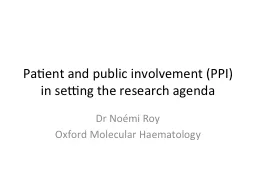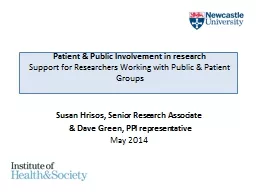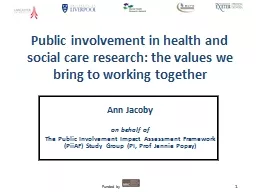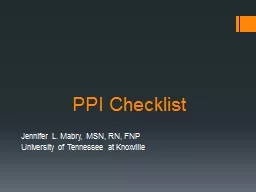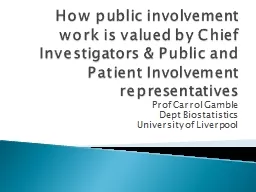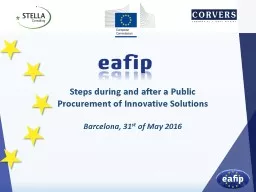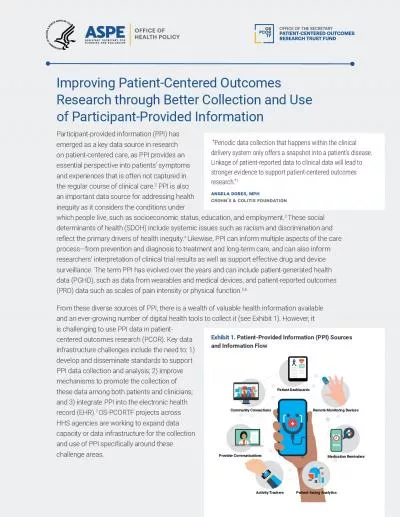PPT-Patient and public involvement (PPI) in setting the research agenda
Author : faustina-dinatale | Published Date : 2018-03-15
Dr No émi Roy Oxford Molecular Haematology What is the research agenda This is the topics that funding bodies accept as being reasonable valid and worthy of funding
Presentation Embed Code
Download Presentation
Download Presentation The PPT/PDF document "Patient and public involvement (PPI) in ..." is the property of its rightful owner. Permission is granted to download and print the materials on this website for personal, non-commercial use only, and to display it on your personal computer provided you do not modify the materials and that you retain all copyright notices contained in the materials. By downloading content from our website, you accept the terms of this agreement.
Patient and public involvement (PPI) in setting the research agenda: Transcript
Download Rules Of Document
"Patient and public involvement (PPI) in setting the research agenda"The content belongs to its owner. You may download and print it for personal use, without modification, and keep all copyright notices. By downloading, you agree to these terms.
Related Documents

